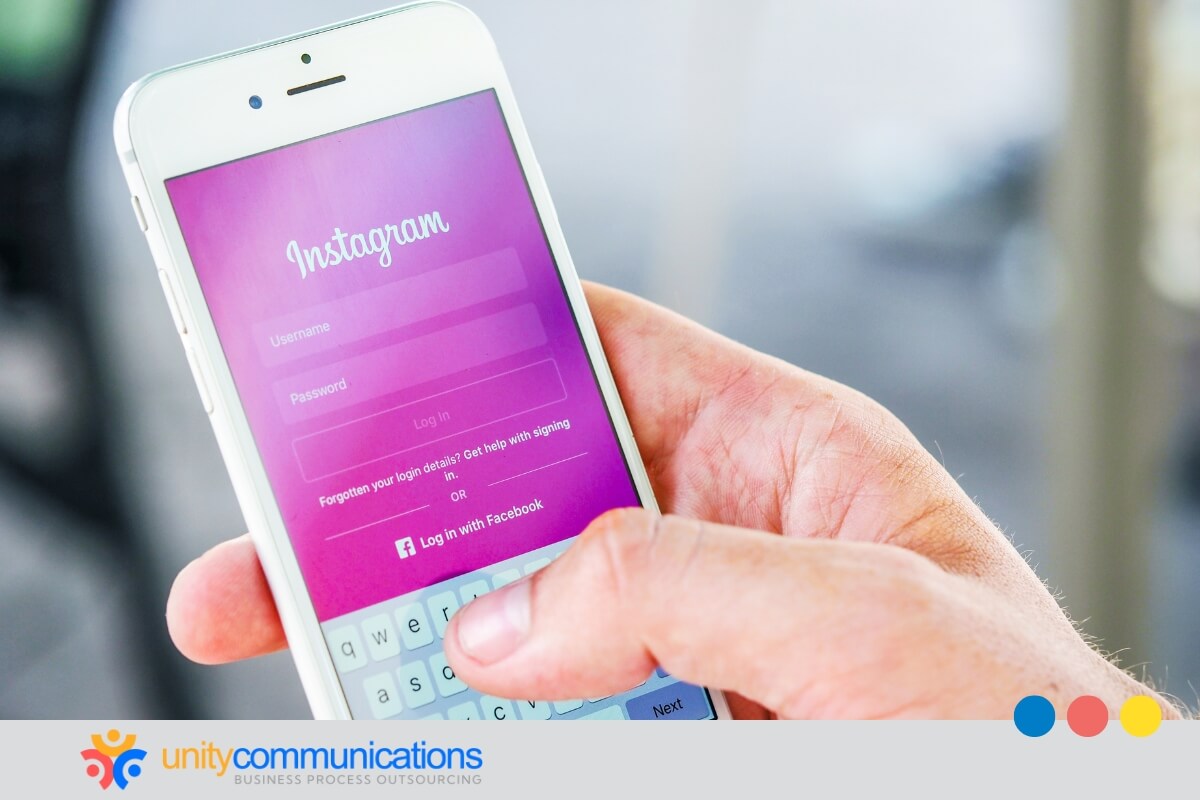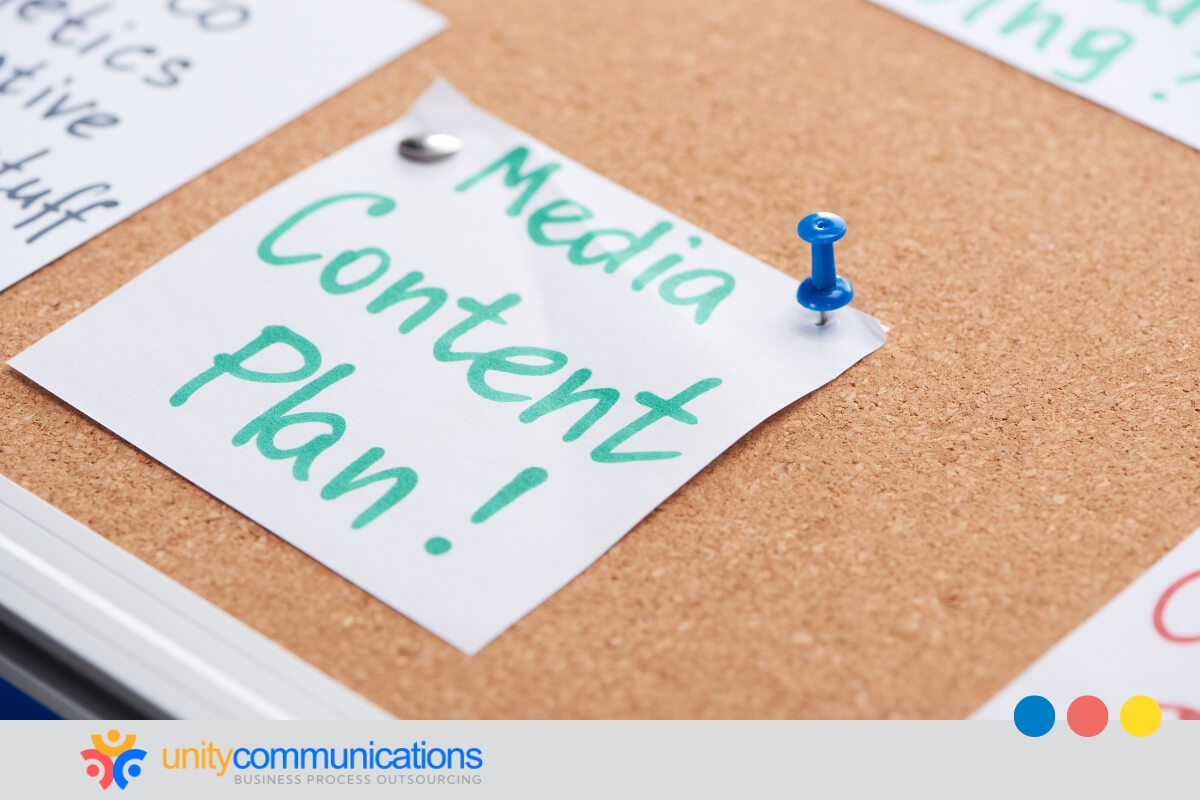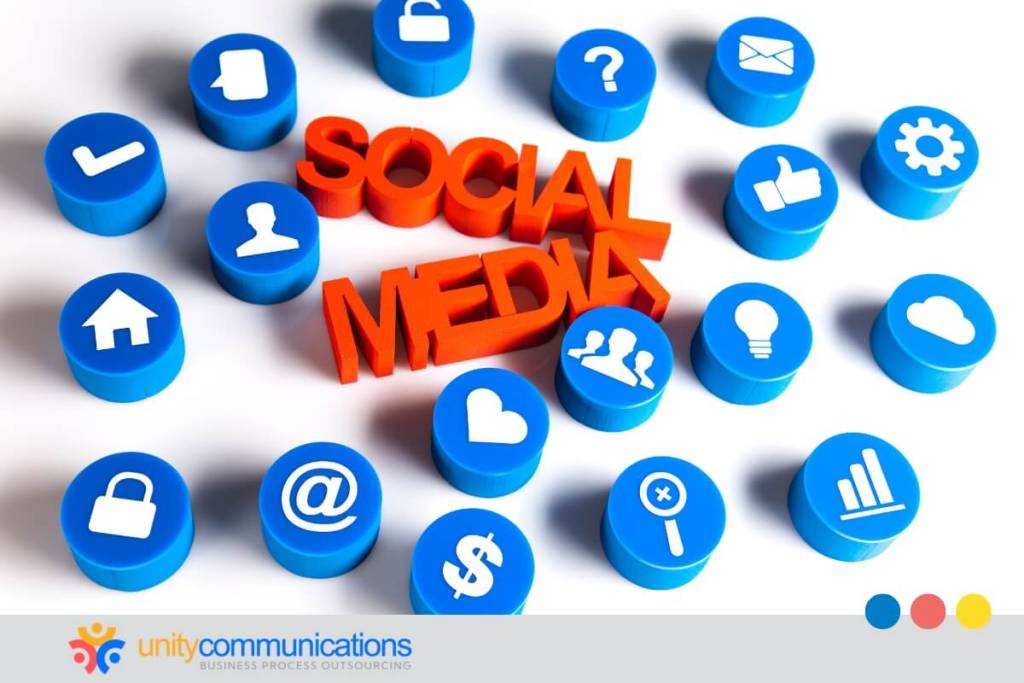Table of Contents
Social media platforms are not created equal. To succeed in digital marketing, you must choose the one that best aligns with your audience and goals. But how do you choose the one that best suits your business objectives and audiences?
This article explores the essential factors to consider when selecting the best social media platform for marketing success. It also explains the benefits of outsourcing social media marketing services to streamline campaigns, access specialized expertise, and scale quickly. Read below to learn more.
What to consider when choosing a social media platform

With 5.31 billion social media users worldwide as of 2025, social media platforms have a massive reach, making them a cost-effective tool for driving growth. They connect you to a targeted audience, increase brand awareness, convert leads, and strengthen customer relationships.
However, not every platform delivers the same results. Effectiveness depends on choosing the right channel based on your target audience, content style, budget, and goals. Social media platforms vary widely in user demographics, features and capabilities, content types, advertising options, and cost.
Here’s a breakdown of critical factors to consider when choosing the best social media platform for marketing to reach your audience and maximize returns.
1. Understand the platform’s user demographics
Many social media platforms attract distinct demographics. For example, TikTok and Instagram are popular among younger audiences; Instagram’s user base consists of people aged 18-34. Professionals and business-to-business (B2B) companies prefer LinkedIn, while X (formerly Twitter) is well-known among those who want real-time discussions and news updates.
Facebook has a broad user base across all age groups, while YouTube caters to a diverse audience looking for video content.
Choosing the best social media platform for marketing means meeting your audience where they already are. Here’s how to identify the right channel by understanding your target demographics:
- Conduct market research and surveys. Conducting surveys and studying industry reports can provide insights into your target audience’s preferred platforms.
- Analyze platform data. Social media platforms provide built-in analytics tools that show user demographics. Reviewing them identifies where your audience interacts the most.
- Study competitors. Observing where competitors have strong engagement can indicate the best platforms for reaching a similar audience.
- Run test and optimization campaigns. Running test campaigns across multiple websites and tracking performance can reveal the most effective for your brand.
Matching the platform with your target audience improves engagement, increases brand visibility, and optimizes social media marketing efforts for better results.
2. Evaluate platform features and business tools
Another factor to consider when choosing the best social media platform for marketing is its unique features and capabilities. These channels offer various tools for engagement, advertising, and content promotion:
- Facebook offers advanced ad targeting capabilities that allow businesses to reach particular audience segments based on interests, behavior, and demographics.
- Its Groups feature enables brands to build and nurture communities around shared interests or values.
- Facebook Marketplace provides a convenient platform for selling products directly to local and niche buyers.
- Additionally, businesses can use Facebook’s live streaming and event hosting tools to engage audiences in real time and boost participation.
- Instagram’s Reels feature allows brands to share short-form video content that captures attention quickly and encourages engagement through creativity and trends.
- Stories offer a dynamic way to deliver time-sensitive updates, behind-the-scenes content, and limited-time promotions that keep followers coming back daily.
- Its integrated shopping features let users browse and purchase products directly within the app, making it a powerful tool for seamless e-commerce experiences.
TikTok
- TikTok’s algorithm-driven “For You” page helps content go viral by surfacing videos to users based on their interests and behavior, expanding reach beyond followers.
- The Duet and Stitch features encourage user participation by allowing audiences to interact directly with your content, boosting visibility and engagement.
- Its business and creator tools offer detailed performance tracking, helping brands measure impact and fine-tune their strategies in real time.
- Interactive effects and a vast music library make creating fun, memorable content that resonates with TikTok’s highly engaged user base easy.
- LinkedIn offers unmatched professional networking and B2B marketing opportunities, making it the go-to platform for connecting with industry leaders and decision-makers.
- Its publishing tools, including articles and newsletters, are ideal for showcasing thought leadership and building credibility within your niche.
- The platform also provides powerful recruitment features, such as job postings and talent search tools, to attract top-tier candidates.
- Advanced ad targeting allows marketers to reach professionals based on job title, industry, company size, and more, maximizing the impact of every campaign.
X (Twitter)
- X excels at delivering real-time updates and surfacing trending topics, making it a prime platform for staying current and relevant.
- Its Spaces feature enables live audio conversations, fostering dynamic discussions and community engagement in real time.
- Polls and threaded posts offer interactive ways to spark conversations, gather opinions, and share deeper insights with your audience.
- X is a powerful tool for customer service and brand communication. It allows companies to respond quickly and build stronger relationships with their followers.
YouTube
- YouTube supports long-form videos and bite-sized content through YouTube Shorts, allowing creators flexibility to engage different audience preferences.
- The platform offers robust monetization options, including ad revenue, channel memberships, and Super Chats during live streams.
- Live streaming and exclusive content features allow real-time interaction and premium experiences that strengthen audience loyalty.
- YouTube’s strong SEO capabilities ensure your video content is discoverable through Google and YouTube searches, helping to drive sustained visibility and growth.
- Pinterest’s visual search and savvy recommendation algorithms make it easy for users to discover content tailored to their interests.
- Idea Pins allow creators to share engaging, step-by-step guides and storytelling content that keeps users exploring.
- Built-in shopping integrations help brands showcase products seamlessly, encouraging discovery and purchase directly from the platform.
- Pinterest offers substantial organic reach, especially for niche industries like fashion, DIY, home décor, and lifestyle, making it a powerful tool for long-term brand visibility.
The platform’s features influence how you interact with your audience, promote content, and measure success. Assess which tools align with your content strategy and marketing goals.
3. Match your content type to the platform
Each social media platform favors specific content formats. Aligning your strategy to match those strengths can boost engagement and visibility.
Here are the best content types for each platform:
- Facebook supports text, images, videos, and live streams. It is excellent for community engagement, ads, and business pages.
- Instagram is a highly visual platform for publishing high-quality images, short videos, stories, and influencer collaborations.
- TikTok is best for short, engaging videos with trending music, challenges, and user-generated content. It works well for brand awareness and viral marketing.
- LinkedIn is a professional networking site where long-form articles, industry insights, business updates, and thought leadership content perform best.
- X is ideal for short-form text, news, discussions, and customer interactions.
- YouTube is best for long-form video content, tutorials, product demos, and vlogs.
- Pinterest works for visually appealing content, including infographics, DIY projects, and lifestyle inspiration.
Choosing the right content type for each platform ensures your message resonates with the audience, maximizes engagement, and leverages each channel’s unique strengths for better marketing results.
4. Compare advertising tools and ROI potential
Paid social ad campaigns can drive brand awareness, generate leads, and convert leads faster than organic marketing. However, their success can vary across platforms, offering unique ad formats, targeting capabilities, and cost structures.
What is the best social media platform for marketing that aligns with your business goals, audience, and budget? Here’s how popular platforms stack up:
Facebook Ads
- Highly advanced targeting (demographics, interests, behaviors)
- Multiple ad formats (image, video, carousel, collection)
- Retargeting and lookalike audiences for high conversion rates
- Facebook Pixel for tracking user behavior
Instagram Ads
- Integrated with Facebook Ads Manager for precise targeting
- Story, reels, and in-feed ads for visually engaging content
- Shoppable posts for direct e-commerce sales
- Influencer collaborations for brand awareness
TikTok Ads
- In-feed, brand takeover, and top-view ads for high visibility
- Spark ads for boosting organic posts
- User-generated content integration for viral marketing
- Interest-based targeting with AI-driven recommendations
LinkedIn Ads
- Best for B2B marketing and professional services
- Sponsored content, text ads, and InMail ads for direct outreach
- Advanced targeting based on job title, industry, and company size
- Higher cost per click but strong conversion rates for high-value leads
X Ads
- Promoted tweets, accounts, and trends for increased visibility
- Best for real-time engagement and event promotions
- Keyword and interest-based targeting
- Cost-effective for brand awareness campaigns
YouTube Ads
- Skippable and non-skippable video ads for maximum reach
- In-stream, bumper, and display ads for various engagement levels
- Highly effective for long-form content marketing
- Integration with Google Ads for detailed audience targeting
Each platform offers distinct advertising advantages, so selecting the right one depends on your goals, audience, and budget. But when leveraged strategically, social ads can deliver measurable ROI and accelerate business growth.
5. Factor in ad spend and budget efficiency
Social media marketing costs vary across websites, depending on ad placement and performance, audience targeting, and competition. When selecting the best social media platform for your marketing efforts, you must consider your budget and returns.
Most paid social media channels use cost per click (CPC) or cost-per-view (CPV) models because they directly tie cost to user action. Advertisers only pay when someone engages with the ad, making it more cost-efficient and results-driven than paying for impressions alone.
However, not all platforms offer the same value. CPCs can differ based on reach, advertising features, audience targeting precision, competition, and ad space demand. Here’s how average CPCs compare in 2025:
- The average CPC on Facebook and Instagram ranges between $0.50 and $3.50. These platforms offer cost-effective options for brand awareness and engagement campaigns, but costs can be higher for competitive industries. Despite this, Facebook and Instagram remain popular due to their advanced targeting features and large user bases.
- TikTok’s average CPC is between $0.10 and $1.00. The platform is effective for engagement-based campaigns, organic reach, and viral marketing through influencer marketing. Due to its algorithm-driven content distribution, you can achieve significant visibility even with a modest budget.
- LinkedIn is one of the most expensive advertising platforms, with an average CPC of $5 to $10. However, it is effective in marketing B2B and professional services. LinkedIn ads can help acquire high-value leads, including decision-makers and C-suite executives.
- X is more affordable, with an average CPC between $0.26 and $0.50. It is an excellent platform for increasing brand awareness and engaging in real-time discussions.
- YouTube uses the CPV model, which is priced between $0.11 and $0.50. The search engine suits brand retention and long-form content marketing, but you must consider the high costs of producing high-quality videos.
Balancing cost and return is essential. By understanding each platform’s ad pricing model and average CPC or CPV, you can allocate your budget more strategically to maximize visibility, engagement, and ROI.
Why outsourcing social media to a BPO makes sense

Choosing the right platform is one step in social media marketing success. The other is social media management. This requires deep knowledge of budget allocation, ad optimization, and content strategy.
If you require specialized expertise, outsourcing to a business process outsourcing (BPO) provider can help bridge the gap. Outsourcing to an external provider can cut costs by 70%, save time, and leverage expert insights.
Here’s how outsourcing works in social media marketing:
- Discovery and alignment. The provider takes time to understand your brand voice, core business goals, customer profile, and previous social media efforts. This foundation aligns every campaign with business objectives from day one.
- Audience research. They use industry tools, platform insights, and competitive benchmarks to define your ideal audience segments and create customer personas. This step ensures your campaigns are built on data, not assumptions.
- Platform analysis. They choose the best social media platform for marketing based on audience presence, content type, and ad potential to focus your budget and resources where they will have the most impact.
- Strategy development. BPO experts customize your strategy based on campaign goals, messaging, platforms, and tactical plans for organic and paid efforts. Every content then contributes to a broader objective.
- Content planning. They create a detailed content calendar outlining what content to post, where, and when based on each platform’s strengths and audiences.
- Execution and management. They handle all routine tasks, from publishing posts to scheduling ads, responding to comments, and monitoring engagement.
- Analytics and reporting. They track reach, engagement, conversions, and ROI and use the insights to adjust the strategy for better results.
Many BPO providers also specialize in compliance, creating content according to industry standards. This is especially crucial in highly regulated industries, such as healthcare, finance, and education.
For example, the Healthcare Insurance Portability and Accountability Act of 1996 (HIPAA) prohibits sharing personally identifiable information, including posting birth announcements with details.
They also stay current with the latest technologies and seamlessly integrate customer relationship management (CRM), analytics, and marketing automation platforms to streamline workflows.
Outsourcing social media marketing offers strategic support from discovery to execution so your brand appears on the right platforms with the right message without overstretching your internal team.
The bottom line
Choosing the best social media platform for marketing is not a random decision. You must consider your target audience, content strategy, advertising budget, and business goals.
While some platforms offer wide-reaching engagement, others provide niche targeting opportunities that generate higher-quality leads. The key is to align your branding with the platform that best supports your marketing goals. Partnering with BPO experts can streamline social media management, optimize ad performance, and enhance content creation.
Need help aligning your platform strategy with business goals? Let’s connect.




